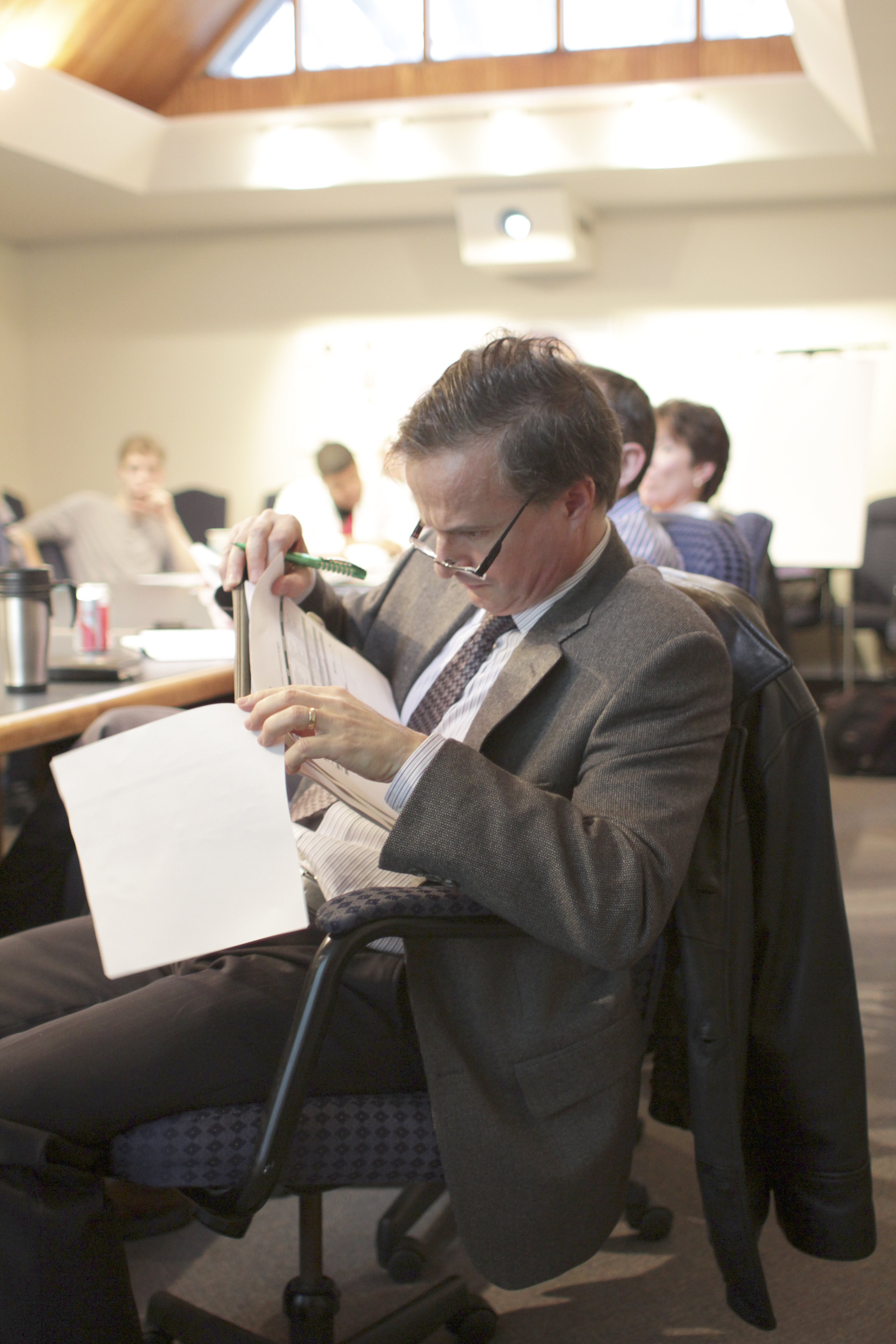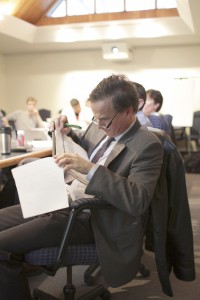Students and profs partner up


Last Friday, Wilfrid Laurier University held its first Research2Revenue competition. Taking place in the boardroom of Alumni Hall, the event saw five different technologies compete against one another for a chance to win a $500 cash prize, made possible with funding from the Ontario Centres of Excellence (OCE), along with pre-approval into the Laurier LaunchPad program.
The competition involved students being paired with faculty members who had ideas for technologies, but who lacked the knowledge on how to organize the technology for commercial use. After an application process, the students and faculty members had a week to design a business model to present on the day of the competition to a panel of judges who would then choose which they thought was the best one.
Yaser Kerachian, a university-industry liaison officer at Laurier, was part of the organizing team that developed the competition.
“This promotes entrepreneurship based on research here at Laurier, and also to try to find students who are interested to work on technologies already developed at Laurier and hopefully create a company out of it,” Kerachian explained.
According to Kerachian, the idea for the event started with a Laurier community member that asked how he could be partnered with a student for a project he had an idea for.
“We couldn’t just organize it for one person, so we thought we should make it bigger and use the structure of a competition to expand it out toward the school community.”
The competition was limited to five technologies this year, due to consensus that this would be a manageable amount based on the short amount of time to organize the event.
“We hand-picked the projects, so there was not a whole lot of public advertisement,” said Oleg Stukalov, a university-industry liaison officer who also helped organize the event. “We could not have managed more than five technologies this year.”
Stukalov said the day before the deadline they thought it was not getting enough interest.
“Right around midnight of the deadline, the applications started to flood in. The event was created very quickly in response to that.”
Kerachian said the importance of the event is three-fold for the university.
“From our perspective, many Canadian technologies end up in the United States and this event is an example of keeping inventions in Canada and only shipping out the product, not the patent,” he explained. “It also benefits the students. It’s not easy finding a job in the current economy, so students can create a job by doing things like the Research2Revenue program.”
He added that the event could also raise awareness of and benefit the Laurier community.
Shayne Dale, a fourth-year chemistry student, was a member of the winning team at this year’s event. Their technology was the construction of labs for a process of protein crystallography, through which the atomic structure of proteins and how they change and interact with other atoms could be determined.
For Dale, winning the event will help push the product forward.
“Stepping forward, it helps to get our product patented, which is where most of the money will go. In the end it ensures we make a premium product before we ship it out.”
Dale found out about the event through his Entrepreneurship and Science Class (SC 200).
Looking forward, he felt the promotions for the competition could be improved.
“Maybe send out more emails, even perhaps a booth in the Science Atrium for people to see what it’s all about.”
Speaking about the most beneficial element of the Research2Revenue event, Dale said it came down to the confidence he gained as a result.
“It gives you the confidence and builds that strong character needed to start up a company.”


